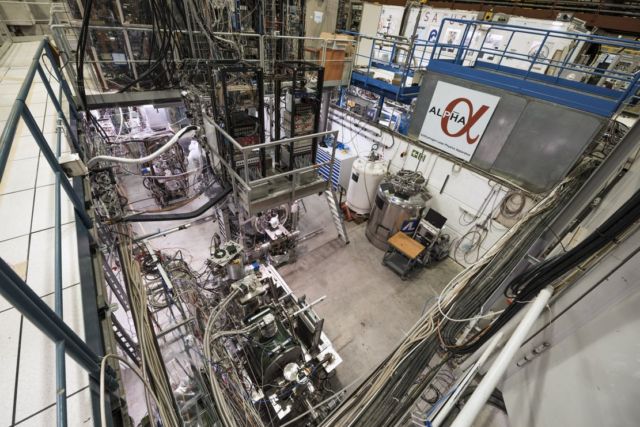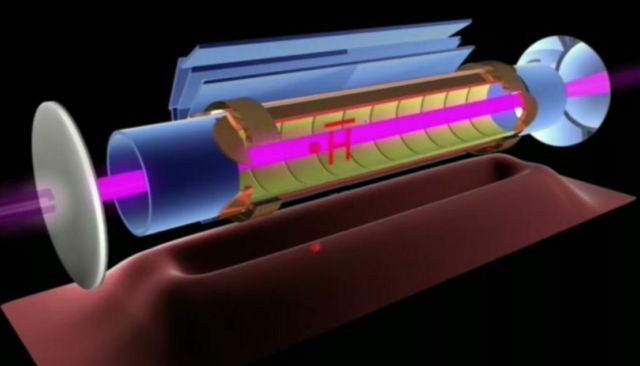ALPHA experiment at CERN cools antimatter using laser light for the first time.
The result of this ALPHA experiment opens the door to considerably more precise studies of the internal structure of antihydrogen and of how it behaves under the influence of gravity.
The ALPHA collaboration at CERN has succeeded in cooling down antihydrogen atoms – the simplest form of atomic antimatter – using laser light.
The technique, known as laser cooling, was first demonstrated 40 years ago on normal matter and is a mainstay of many research fields. Its first application to antihydrogen by ALPHA, described in a paper published today in Nature, opens the door to considerably more precise measurements of the internal structure of antihydrogen and of how it behaves under the influence of gravity. Comparing such measurements with those of the well-studied hydrogen atom could reveal differences between matter and antimatter atoms. Such differences, if present, could shed light on why the universe is made up of matter only, an imbalance known as matter–antimatter asymmetry.

The ALPHA experiment at CERN. Credit CERN
“The ability to laser-cool antihydrogen atoms is a game-changer for spectroscopic and gravitational measurements, and it could lead to new perspectives in antimatter research, such as the creation of antimatter molecules and the development of anti-atom interferometry,” says ALPHA spokesperson, Jeffrey Hangst. “We’re over the moon. About a decade ago, laser cooling of antimatter was in the realm of science fiction.”
The ALPHA team makes antihydrogen atoms by taking antiprotons from CERN’s Antiproton Decelerator and binding them with positrons originating from a sodium-22 source. It then confines the resulting antihydrogen atoms in a magnetic trap, which prevents them from coming into contact with matter and annihilating. Next, the team typically performs spectroscopic studies, that is, it measures the anti-atoms’ response to electromagnetic radiation – laser light or microwaves. These studies have allowed the team to, for example, measure the 1S–2S electronic transition in antihydrogen with unprecedented precision. However, the precision of such spectroscopic measurements and of planned future measurements of the behaviour of antihydrogen in the Earth’s gravitational field in ongoing experiments is limited by the kinetic energy or, equivalently, the temperature, of the antiatoms.
This is where laser cooling comes in. In this technique, laser photons are absorbed by the atoms, causing them to reach a higher-energy state. The anti-atoms then emit the photons and spontaneously decay back to their initial state. Because the interaction depends on the atoms’ velocity and as the photons impart momentum, repeating this absorption–emission cycle many times leads to cooling of the atoms to a low temperature.
source CERN






Leave A Comment